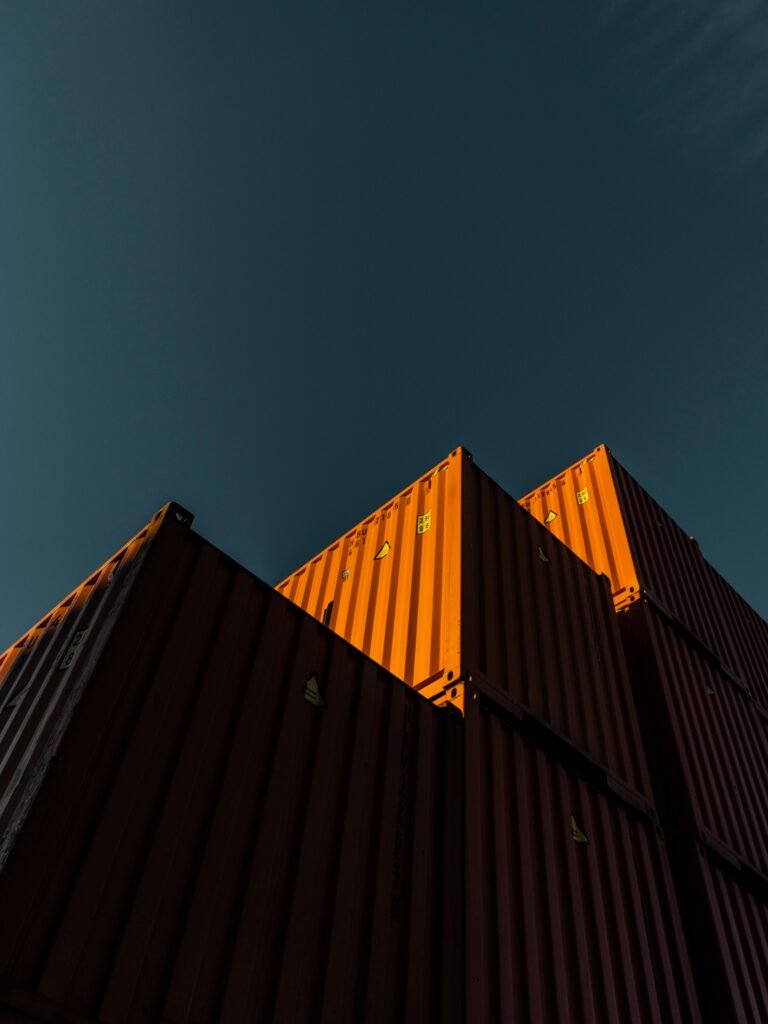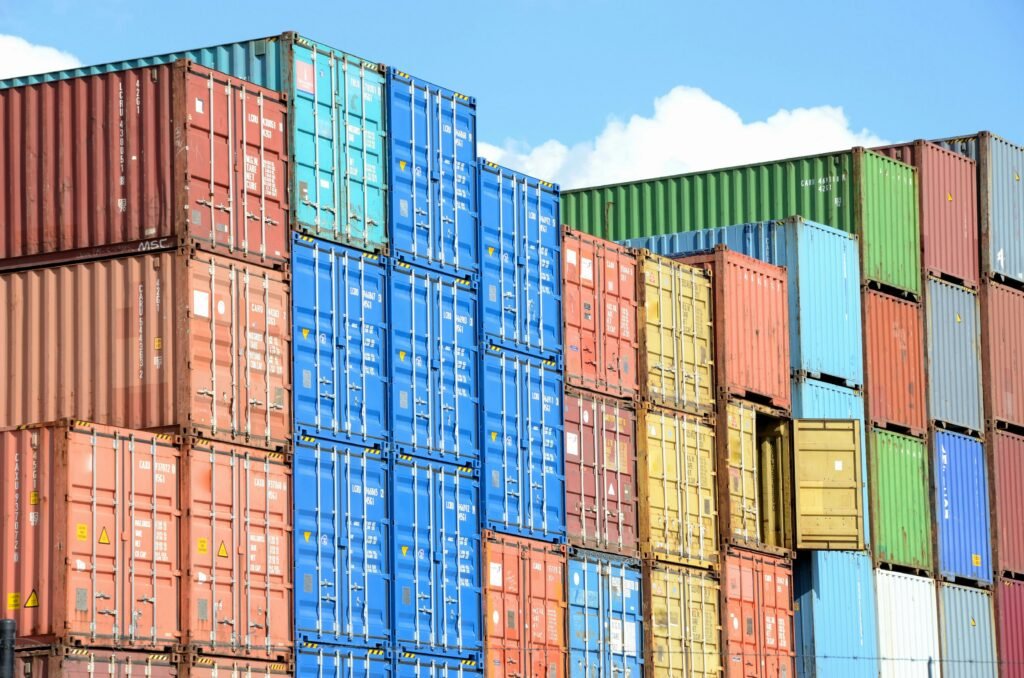Welcome to a guide on matching food storage containers to your specific requirements! It’s important to have the right containers to keep your food fresh and organized. From meal prep to leftovers, we’ll explore the different types of containers available and how to choose the best ones for your needs. Whether you’re looking for airtight containers for storing grains and snacks, or microwave-safe options for reheating meals, we’ve got you covered. Let’s get started on finding the perfect containers to suit your specific food storage needs. Have you ever found yourself overwhelmed by the array of food storage containers available on the market? Trying to match the right container to your specific needs can be a daunting task. However, with a little guidance, you can easily find the perfect containers for your unique requirements. Let’s dive into the world of food storage containers and explore how to match them to your specific needs.

This image is property of images.unsplash.com.
Types of Food Storage Containers
When it comes to food storage containers, there are a variety of options to choose from. Each type of container is designed for specific purposes, so it’s essential to understand the different types before making your selection.
Plastic Food Storage Containers
Plastic containers are versatile, lightweight, and affordable. They come in various shapes and sizes, making them perfect for storing leftovers, meal prepping, or packing lunches. Look for containers that are BPA-free and microwave-safe for added convenience.
Glass Food Storage Containers
Glass containers are durable, non-toxic, and resistant to staining and odors. They are an excellent choice for storing both hot and cold foods, as they are safe for use in the oven, microwave, freezer, and dishwasher. Glass containers are also environmentally friendly and can be recycled.
Stainless Steel Food Storage Containers
Stainless steel containers are a sustainable option for food storage, as they are long-lasting and recyclable. They are an excellent choice for storing foods that need to be kept at a specific temperature, such as hot soups or cold salads. Stainless steel containers are also resistant to rust and corrosion, making them a hygienic choice for storing food.
Silicone Food Storage Bags
Silicone food storage bags are a reusable, eco-friendly alternative to plastic bags. They are great for storing snacks, sandwiches, and other small items. Silicone bags are durable, leak-proof, and easy to clean, making them ideal for on-the-go storage.
Matching Containers to Food Types
Different types of foods require different storage conditions to maintain their freshness and quality. Matching the right container to the specific food type is crucial for preserving its flavor and texture.
Dry Foods
When storing dry foods such as pasta, rice, and cereal, opt for airtight containers to prevent moisture and pests from spoiling the food. Consider transparent containers to easily identify the contents and quantities.
Fresh Produce
Fruits and vegetables need breathable containers to allow airflow and prevent moisture buildup. Choose containers with ventilation holes or perforations to keep produce fresh for longer. Consider using produce-specific containers, such as lettuce crisper bins or berry baskets, to maintain optimal freshness.
Leftovers
Leftover foods should be stored in appropriately sized containers to prevent air exposure and contamination. Make sure the containers are microwave-safe for easy reheating. Label the containers with the date to track freshness and avoid food waste.
Beverages
Liquids such as soups, sauces, and beverages require leak-proof containers to prevent spills and maintain freshness. Look for containers with secure lids and seals to prevent leaks during storage and transport. Consider insulated containers for hot or cold beverages to preserve their temperature.

This image is property of images.unsplash.com.
Choosing the Right Sizes
Selecting the right container size is essential for efficient food storage and organization. Consider the quantity of food you typically store and the available storage space in your kitchen before choosing the container size.
Small Containers
Small containers are perfect for storing individual portions, snacks, sauces, or condiments. They are also suitable for organizing smaller items in your pantry or refrigerator. Consider stackable containers to save space and keep your kitchen tidy.
Medium Containers
Medium containers are ideal for storing leftovers, meal prepped dishes, or larger food quantities. They are versatile and can be used for storing a variety of foods, such as salads, casseroles, or pasta dishes. Consider containers with compartments for storing multiple foods in one container.
Large Containers
Large containers are great for storing bulk quantities of food, such as soups, stews, or batch-cooked meals. They are also useful for storing pantry staples like flour, sugar, or grains. Look for containers with handles for easy transport and pouring.
Seal Types
The type of seal on a food storage container determines its airtightness and leak-proof properties. Understanding the different seal types can help you choose the right containers for your specific food storage needs.
Snap-On Lids
Snap-on lids are convenient for quick and easy closure of containers. They are ideal for storing dry goods, snacks, or foods that do not require an airtight seal. Ensure the lids fit snugly to prevent spills and maintain freshness.
Screw-Top Lids
Screw-top lids provide a secure and airtight seal, making them perfect for storing liquids or foods that need to be kept fresh. They are easy to open and close, making them a versatile option for various storage needs. Look for containers with leak-proof seals to prevent spills.
Clamp-Down Lids
Clamp-down lids feature a locking mechanism that creates a tight seal and prevents air and moisture from entering the container. They are ideal for storing perishable foods, marinating meats, or transporting meals. Make sure the clamps are sturdy and easy to use for hassle-free storage.

This image is property of images.unsplash.com.
Stacking and Nesting
Efficient storage of food containers is essential for maximizing space in your kitchen cabinets, pantry, or refrigerator. Consider the stacking and nesting capabilities of containers to optimize storage and keep your kitchen organized.
Stackable Containers
Stackable containers are designed to fit neatly on top of each other, saving valuable shelf space in your kitchen. They are perfect for organizing your pantry or refrigerator and keeping similar items together. Look for containers with nesting lids for effortless storage.
Nesting Containers
Nesting containers are designed to fit inside each other when not in use, minimizing clutter in your kitchen cabinets. They are ideal for compact storage and easy retrieval when needed. Consider nesting containers with graduated sizes for versatile storage options.
Labeling and Organization
Proper labeling and organization of food storage containers are essential for keeping track of your food inventory and preventing food waste. Consider implementing a labeling system to streamline your storage and make meal planning more manageable.
Labeling Options
Label your food containers with the name of the contents and the date it was stored to track freshness. Use a permanent marker or labels to ensure the information is easily visible and durable. Consider color-coding your labels for quick identification of different food categories.
Organization Tips
Organize your food containers by type, size, or frequency of use to streamline your storage system. Group similar containers together and designate specific areas in your kitchen for storing different types of food. Consider using stackable racks or shelf dividers to maximize space and keep your storage area tidy.
Cleaning and Maintenance
Proper cleaning and maintenance of food storage containers are essential for ensuring food safety and prolonging the lifespan of the containers. Follow these tips to keep your containers clean, hygienic, and in good condition.
Washing Instructions
Wash your food containers with warm, soapy water after each use to remove food residue and odors. Use a bottle brush or scrubbing sponge to clean hard-to-reach areas and corners. Avoid using abrasive cleaners or harsh chemicals that can damage the containers.
Drying Methods
Allow your food containers to air dry thoroughly before storing them to prevent mold or mildew growth. Place the containers upside down on a dish rack or kitchen towel to ensure proper drying. Consider using a drying mat to absorb excess moisture and keep your containers clean and dry.
Storage Tips
Store your food containers in a cool, dry place away from direct sunlight to prevent discoloration or warping. Keep the lids separate from the containers to allow proper airflow and prevent moisture buildup. Consider using storage bins or pantry organizers to keep your containers neatly arranged and easily accessible.
Eco-Friendly Options
As environmental awareness grows, many people are opting for eco-friendly food storage containers to reduce waste and promote sustainability. Explore these eco-friendly options to make a positive impact on the environment.
Biodegradable Containers
Biodegradable containers are made from natural materials such as bamboo, cornstarch, or sugarcane bagasse. They are compostable and break down into organic matter, reducing landfill waste. Consider using biodegradable containers for disposable or single-use storage needs.
Reusable Containers
Reusable containers are durable, long-lasting alternatives to disposable plastic containers. Look for containers made from sustainable materials such as glass, stainless steel, or silicone. They are easy to clean, safe for food storage, and reduce plastic waste in the environment.
Upcycled Containers
Upcycled containers are creatively repurposed from existing materials to give them a new life. Consider using mason jars, tin cans, or glass bottles as food storage containers. Upcycled containers are unique, budget-friendly, and add a touch of creativity to your kitchen storage.
By understanding the different types of food storage containers, matching them to your specific food storage needs, choosing the right sizes, seal types, and stacking options, labeling and organizing them effectively, cleaning and maintaining them properly, and exploring eco-friendly options, you can create a functional and efficient food storage system tailored to your lifestyle. Whether you’re meal prepping, packing lunches, or storing leftovers, having the right containers at your fingertips will make meal planning and cooking more manageable and enjoyable. Happy storing!
